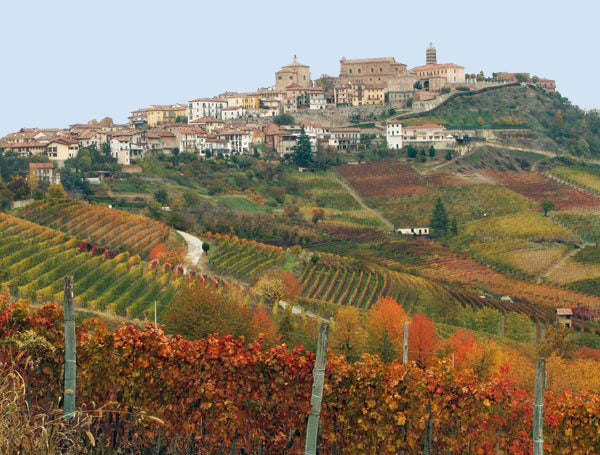The impact of climate change on Barolo wines

1 - Nebbiolo's growing season: what exactly is shifting?
Nebbiolo buds early and ripens late. Historically, harvesting was often carried out in late October; nowadays, it more often shifts to early October and, in warm years, even late September. This accelerates sugar buildup, reduces natural acidity, and increases the risk of bunch sunburn. 2019 was a notable exception: a relatively late harvest added extra freshness and structure.
What are the main effects in the vineyard?
Earlier phenology: earlier flowering and véraison (the crucial stage in viticulture where the grape berries change color from green to red/purple) increase sensitivity to spring frosts and summer heatwaves. Heat stress and drought: thicker skins → more tannins and colorants, but risk of imbalance if the plant is truly dehydrated. Alcohol potential increases: riper grapes = more sugars; the trick is to achieve ripeness without overcooking. A vintage like 2019 demonstrates how cool nights can keep alcohol and acid levels in check.
2 - What do you taste in the glass?
You often see riper fruit, softer tannins , and Barolos that are ready to drink sooner. This isn't a natural phenomenon, but the result of conscious choices in the vineyard and cellar.
3) How do Barolo growers adapt in the vineyard?
More and more producers are looking to higher elevations and cooler exposures (north/east) to preserve freshness. Within the region, there's even discussion about relaxing the regulations regarding north-facing slopes – a sensitive issue, as terroir tradition carries significant weight. Later and more selective defoliation, higher canopies, and more targeted pruning provide natural shade and reduce sunburn. Cover crops ( plants sown specifically to cover the ground and improve soil health ), reduced tillage, and added organic matter help retain moisture and limit erosion. In Italy, irrigation is traditionally prohibited in top appellations , with emergency irrigation as an exception. During the extremely dry 2022 season, Piedmont granted a specific exemption; several reputable estates confirmed how crucial this step was – exclusively for young or distressed vines and under strict conditions. Clonal selection and, in particular, drought-resistant rootstocks (and more field selection/mass selection) are becoming increasingly important to maintain balance during warmer and drier summers.
4) Adjustments in the cellar: finesse over muscle
Gentler extraction: shorter or more subtle macerations and lower fermentation temperatures to avoid bitterness and preserve aromatic precision. (Partially) whole bunches: a few producers are experimenting with whole bunches to add tension, floral notes, and freshness in warm years. It remains a niche, but is growing as a style tool. Coordinating wood use: more often large, neutral botti or a blend, so that the wood doesn't "warm up" the fruit. Technology to reduce alcohol exists, but rarely aligns with Barolo's artisanal ethos; winemakers primarily look for it in vineyard selections.
5) Years in perspective
Climate change increased the likelihood of good ripeness, but extremes make the game more unpredictable. 2018 and 2020 produced widely acclaimed wines; 2019 stood out for its freshness and lower alcohol; 2022 was hot and dry, but with surprisingly good results thanks to rigorous selection and vineyard management.
6) What does this mean for you as a Barolo lover?
Look for altitude and exposure: wines from higher-altitude or cooler-oriented crus often retain extra tension. Pay attention to the estate: in warm years, the producer's hand is crucial (selection, canopy management, extraction). Style by vintage: 2019 and 2020 offer classic structure and precision; 2022 offers charm and ripe fruit when top estates have been rigorously selected.
Frequently Asked Questions
a - Does climate change automatically make Barolo heavier?
Not automatically. Warmth pushes toward higher alcohol, but cool nights, harvest timing, and cellar choices maintain balance. 2019 is a prime example of this.
b - Will there soon be a massive relocation to northern slopes?
There is discussion about relaxing the rules, but the Consorzio prioritizes tradition and terroir identity. Expect targeted expansions and blending options, not a landslide.
c - Is irrigation allowed in Barolo ?
In principle not – only emergency irrigation and with regional exemptions, such as in 2022. Many estates prefer to continue with dry cultivation and invest in soil and canopy management.
Want to know more about the best vintages ? Or perhaps the best Barolo Crus ? Read our blog posts.

